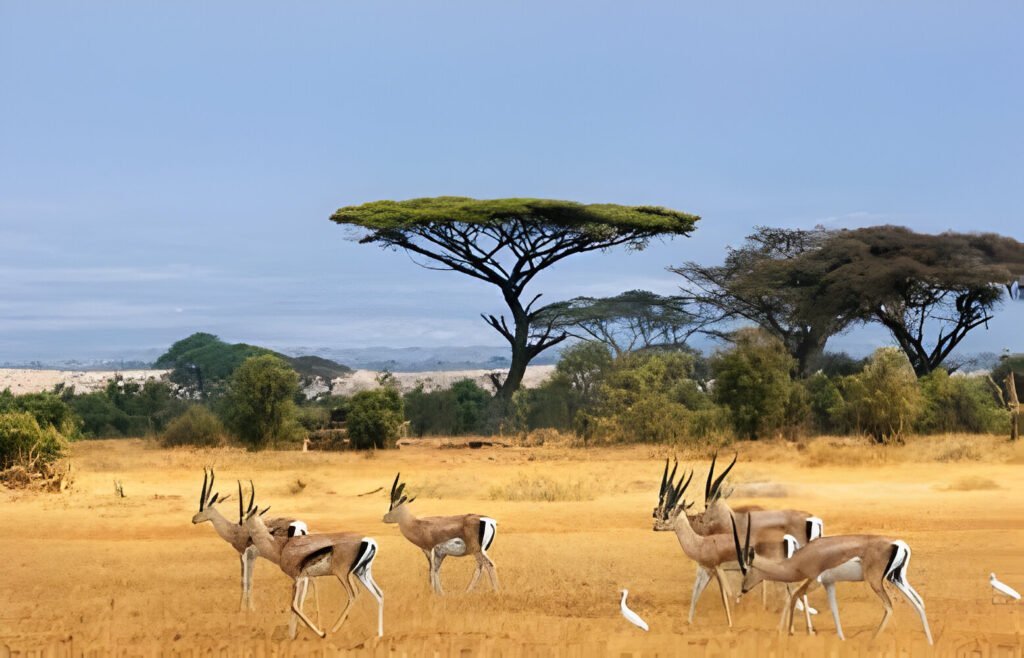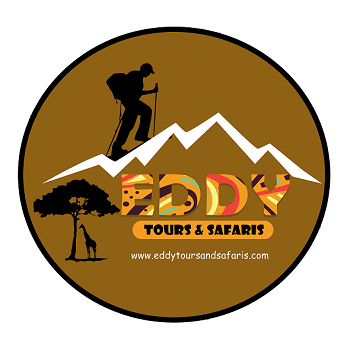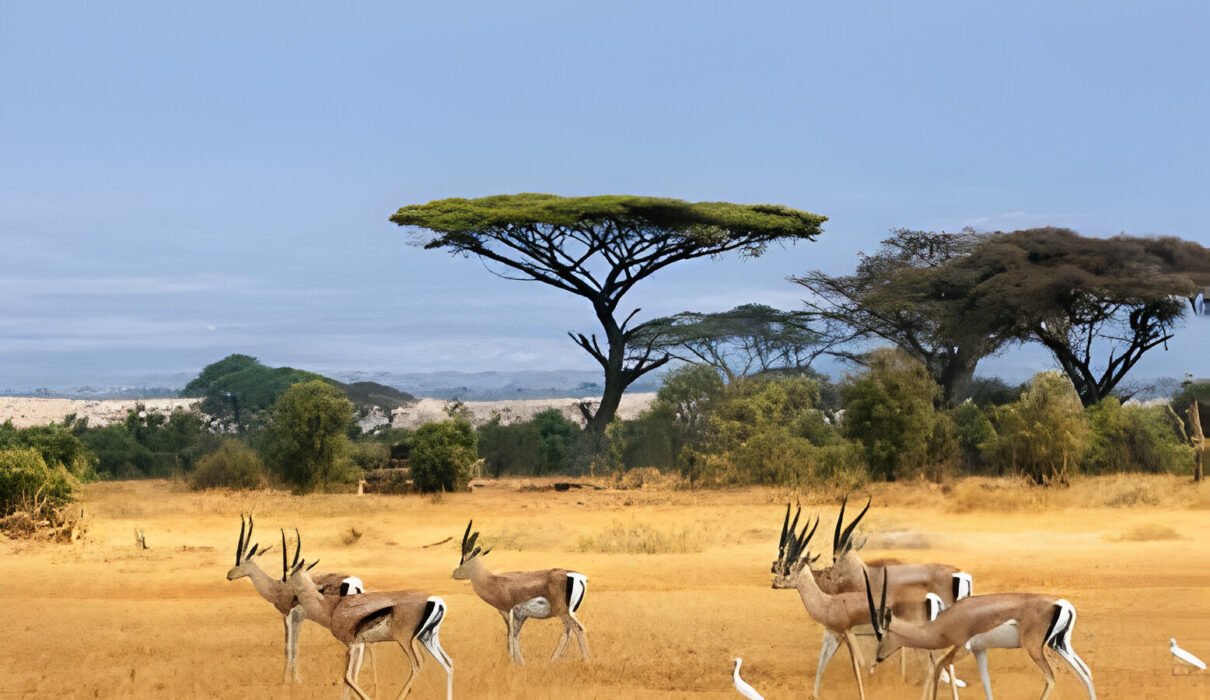Introduction
The Masai Mara and the Serengeti are two of Africa’s most iconic safari destinations, each offering unique experiences that attract thousands of wildlife enthusiasts every year. Both parks are part of the same ecosystem, yet they are located in different countries—Kenya and Tanzania, respectively. Choosing between the two can be challenging, as both offer exceptional opportunities to witness wildlife in its natural habitat. This guide compares the Masai Mara and Serengeti to help you decide which destination is best for your next African adventure.

Geographical Overview
Understanding the geographical context of these two parks can help set the stage for your safari experience.
Location and Size: Masai Mara vs. Serengeti
- Masai Mara: Located in southwestern Kenya, the Masai Mara National Reserve covers approximately 1,510 square kilometers. It is part of the larger Mara-Serengeti ecosystem and is famous for its dense wildlife population.
- Serengeti: The Serengeti National Park in northern Tanzania spans over 14,750 square kilometers, making it significantly larger than the Masai Mara. It is one of the oldest and most scientifically significant ecosystems in the world.
Landscape and Terrain: What to Expect
- Masai Mara: The Masai Mara is characterized by rolling hills, open grasslands, and acacia trees. The Mara River, which plays a crucial role during the Great Migration, is a defining feature of the landscape.
- Serengeti: The Serengeti’s landscape is more diverse, with vast plains, kopjes (rocky outcrops), riverine forests, and woodlands. The endless plains are particularly iconic, offering a true sense of the African wilderness.
Wildlife Experiences
Both parks are renowned for their wildlife, but there are subtle differences in what you can expect to see.
Big Five Sightings
- Masai Mara: The Masai Mara is a prime location for spotting the Big Five—lion, leopard, elephant, buffalo, and rhinoceros—due to its smaller size and high density of animals.
- Serengeti: While the Serengeti also offers excellent Big Five sightings, its vast size means you may need to cover more ground to spot them all. However, the diversity and number of species are unparalleled.
The Great Migration: Which Park Offers the Best Views?
- Masai Mara: The Masai Mara is famous for the dramatic river crossings of the Great Migration, typically from July to September. Witnessing the herds brave the crocodile-infested waters of the Mara River is a highlight.
- Serengeti: The Serengeti offers a more extended view of the migration, with the herds moving through different parts of the park from November to July. Calving season in the southern Serengeti, usually in February, is particularly special.
Unique Wildlife Species in Each Park
- Masai Mara: Besides the Big Five, the Mara is known for large prides of lions, cheetahs, and the rare sighting of a black rhinoceros.
- Serengeti: The Serengeti is home to unique species such as the African wild dog and the massive Nile crocodiles found in the Grumeti River.
Best Time to Visit
The timing of your visit can greatly affect your safari experience.
Seasonal Differences in the Masai Mara
- Dry Season (July to October): This is the best time to visit, coinciding with the Great Migration and optimal wildlife viewing conditions.
- Wet Season (November to June): The landscape is lush, and there are fewer tourists, but wildlife can be harder to spot due to thick vegetation.
Seasonal Differences in the Serengeti
- Dry Season (June to October): Like the Masai Mara, this is the best time for wildlife viewing, with animals congregating around water sources.
- Wet Season (November to May): The Serengeti is vibrant with life, particularly during the calving season in February, but road conditions can be challenging.
Weather Patterns and How They Affect Your Safari
Both parks have similar weather patterns, with the dry season offering the best conditions for safaris. However, the wet season brings beautiful, green landscapes and opportunities for birdwatching.
Safari Costs and Accommodation
Your budget and preferred style of travel will influence your choice.
Comparing Safari Costs
- Masai Mara: Generally, safaris in the Masai Mara tend to be more affordable due to its proximity to Nairobi, reducing travel costs.
- Serengeti: The Serengeti is often more expensive, especially when considering park fees, internal flights, and more remote luxury lodges.
Accommodation Options in the Masai Mara
- Luxury Lodges: Options like Angama Mara offer stunning views and world-class amenities.
- Mid-Range Camps: There are numerous tented camps providing comfort without the high price tag.
- Budget Campsites: For budget-conscious travelers, the Mara offers several campsites within and around the reserve.
Accommodation Options in the Serengeti
- Luxury Lodges: Properties like Four Seasons Serengeti provide unmatched luxury and are located in prime game-viewing areas.
- Mid-Range Lodges and Camps: The Serengeti has numerous mid-range options, many of which are mobile camps that move with the migration.
- Budget Campsites: There are also budget-friendly campsites within the Serengeti for those looking for a more rustic experience.
Safari Activities
Both parks offer a range of activities to enhance your safari experience.
Game Drives
- Masai Mara: Game drives are the most popular activity, with some lodges offering night drives to see nocturnal wildlife.
- Serengeti: The Serengeti also excels in game drives, with vast areas to explore and the chance to see less-visited parts of the park.
Hot Air Balloon Safaris
- Masai Mara: Balloon safaris over the Mara provide breathtaking views of the landscape and wildlife, especially during the migration.
- Serengeti: The Serengeti is equally famous for balloon safaris, offering expansive views of the plains and wildlife below.
Walking Safaris
- Masai Mara: Some conservancies around the Mara offer walking safaris, allowing you to experience the bush on foot.
- Serengeti: The Serengeti offers walking safaris in specific areas, led by experienced guides who teach you about the smaller details of the ecosystem.
Cultural Experiences
- Masai Mara: Visits to Maasai villages are a popular cultural experience, offering insights into the traditional Maasai way of life.
- Serengeti: In Tanzania, you can engage with the Hadzabe and Datoga tribes, who live near the Serengeti and Lake Eyasi, for a deeper cultural experience.
Crowds and Tourism
Both parks are popular, but the level of tourism can vary.
Tourist Density in the Masai Mara
The Masai Mara can become crowded, particularly during the Great Migration. Popular spots like the Mara River crossings can see a high concentration of vehicles.
Tourist Density in the Serengeti
The Serengeti, due to its larger size, can absorb more tourists without feeling crowded. Even during the migration, it’s possible to find quieter areas.
Finding the Best Spots Away from the Crowds
- Masai Mara: Consider visiting the surrounding conservancies, which limit the number of vehicles and offer more exclusive experiences.
- Serengeti: The northern and western corridors of the Serengeti are less frequented and provide a more intimate safari experience.
Accessibility
How easy it is to get to and move around each park.
Getting to the Masai Mara
The Masai Mara is relatively easy to access, with a 5-6 hour drive from Nairobi or a short flight to one of the many airstrips within the reserve.
Getting to the Serengeti
The Serengeti is more remote, often requiring a domestic flight from Arusha or Kilimanjaro International Airport. Once in the park, distances can be vast, necessitating a well-planned itinerary.
Internal Transportation and Safari Logistics
- Masai Mara: Safari vehicles are typically used for game drives, with roads generally in good condition.
- Serengeti: Due to its size, the Serengeti often requires longer drives, and some areas may only be accessible by air.
Cultural Experiences
Both parks offer rich cultural experiences, but they differ in the interactions and communities you’ll encounter.
Interacting with the Maasai in Kenya
The Maasai people are integral to the identity of the Masai Mara. Cultural visits to their villages offer insights into their traditional lifestyle, including warrior dances and beadwork.
Cultural Tours with the Hadzabe and Datoga in Tanzania
In Tanzania, you can visit the Hadzabe, one of the last hunter-gatherer tribes in Africa, and the Datoga, known for their blacksmithing skills. These tours provide a deeper understanding of Tanzania’s cultural diversity.
Photographic Opportunities
Both the Masai Mara and Serengeti are photographer’s paradises.
Best Spots for Photography in the Masai Mara
The Mara River crossings, large prides of lions, and the open plains offer fantastic photographic opportunities, especially during the golden hours of sunrise and sunset.
Top Photographic Locations in the Serengeti
The Serengeti’s kopjes, vast wildebeest herds, and the Grumeti River are prime spots for stunning wildlife and landscape photography.
Lighting and Landscape Considerations
- Masai Mara: The Mara’s open terrain provides excellent lighting for photography, with clear views across the plains.
- Serengeti: The Serengeti’s diverse landscapes offer varied backdrops, from the endless plains to the dramatic kopjes, making it ideal for both wide-angle and close-up shots.
Conservation Efforts
Both parks are involved in crucial conservation work, though the challenges they face differ.
Conservation Initiatives in the Masai Mara
The Masai Mara faces challenges from human-wildlife conflict, particularly due to its proximity to agricultural land. Several initiatives focus on community involvement in conservation to mitigate these conflicts.
Conservation Initiatives in the Serengeti
The Serengeti is renowned for its efforts to protect the migration routes and combat poaching. Projects like the Serengeti Lion Project work to preserve predator populations.
How Tourists Can Support Conservation
Both parks encourage eco-friendly tourism. By choosing lodges that support conservation efforts and practicing responsible tourism, visitors can contribute to the preservation of these ecosystems.
Family-Friendliness
Considerations for families traveling with children.
Is the Masai Mara Suitable for Families?
Yes, the Masai Mara offers a range of family-friendly lodges and activities. Shorter game drives and cultural visits are particularly engaging for children.
Is the Serengeti Suitable for Families?
The Serengeti is also family-friendly, though the long distances between attractions can be tiring for young children. However, some lodges offer special programs for kids.
Best Family-Friendly Lodges and Activities
Both parks have lodges that cater to families, with activities like guided nature walks and educational programs for children.
Safety and Health Considerations
Ensuring your safari is safe and healthy.
Safety in the Masai Mara
The Masai Mara is generally safe for tourists, but it’s important to follow your guide’s instructions, particularly regarding wildlife interactions.
Safety in the Serengeti
The Serengeti is also safe, though the remoteness of some areas means medical facilities can be far away. It’s crucial to travel with a reputable tour operator.
Health Precautions for Safari Travelers
Both parks are in malaria-endemic areas, so taking antimalarial medication and using insect repellent is recommended. Ensure you have the necessary vaccinations before traveling.
Unique Selling Points
Why you might choose one park over the other.
Why Choose the Masai Mara?
- Easier accessibility and more concentrated wildlife sightings make it ideal for shorter trips.
- The opportunity to witness the dramatic Mara River crossings during the Great Migration.
Why Choose the Serengeti?
- A vast, diverse landscape offering a more expansive and varied safari experience.
- The chance to follow the Great Migration across different regions of the park throughout the year.
Combining Both Destinations in One Trip
For those with the time and budget, combining the Masai Mara and Serengeti in one trip offers the ultimate safari experience. The seamless connection between these parks makes it possible to witness the best of both worlds.
FAQs
1. Can I see the Great Migration in both parks? Yes, the Great Migration moves between the Serengeti and the Masai Mara. The timing differs, with the Serengeti hosting the migration from November to July and the Masai Mara from July to October.
2. Which park is better for a short safari? The Masai Mara is more suitable for a short safari due to its smaller size and easier access, allowing you to see a lot in a short time.
3. How do the accommodations compare in terms of luxury? Both parks offer luxury accommodations, but the Serengeti has more remote, high-end lodges that provide a more exclusive experience.
4. Is it possible to visit both the Masai Mara and Serengeti in one trip? Yes, many tour operators offer packages that include both parks, typically connected by a short flight.
5. Which park offers better chances to see predators? Both parks offer excellent predator sightings, but the Serengeti’s larger size means you might have to travel further, while the Masai Mara’s smaller size often makes it easier to spot predators quickly.
6. What are the main differences in the safari experience? The Masai Mara offers a more concentrated and accessible safari experience, while the Serengeti provides a more expansive and diverse adventure, often with fewer tourists in the remote areas.
Conclusion
Both the Masai Mara and the Serengeti offer unparalleled safari experiences, each with its own unique charm. Whether you choose the Mara for its accessibility and dramatic river crossings or the Serengeti for its vast landscapes and extended migration viewing opportunities, you’re guaranteed an unforgettable adventure in the heart of Africa.

